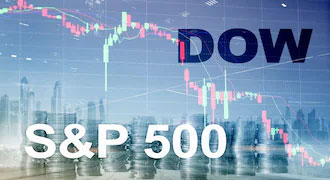The stock market indices are the Dow (Dow Jones Industrial Average) and the Nasdaq (National Association of Securities Dealers Automated Quotations). They represent averages of many numbers derived from specific stock price movements. Investors can also purchase and sell shares on the Nasdaq exchange. The Dow or the Nasdaq does not represent the stock market and economy, but the individual can use them to indicate one. The Dow and the Nasdaq are not able to be traded by investors. They represent the performance of a group of shares as a mathematical average. Investors can buy index funds, either mutual funds or ETFs, that keep a record of these indices.
The Dow
The Dow is mainly directed to the Dow Jones Industrial Average, which many people use to gauge the stock market's performance. The DJIA does not correspond to Dow Jones and Company. This firm is retained by News Corporation and published in The Wall Street Journal. The index is one of several indices that S&P Dow Jones Indices LLC possesses.
The DJIA represents a cost-weighted average between 30 stocks exchanged on the New York Stock Exchange and the Nasdaq. Charles Dow invented the DJIA in 1896. It is used to determine the performance of blue-chip companies in the U.S. The industrial part is primarily historical. Very few index component companies are involved in heavy industry.

The NASDAQ
Two things can be referred to by the term Nasdaq. One is the National Association of Securities Dealers Automated Quotations (NASDAQ) stock market: it was the first digital stock exchange that permitted investors to purchase and sell shares digitally. It was also the first to allow stock trading on an automated, transparent, and speedy system.
An index is the second reference. Many indexes are comprised of shares that are exchanged on Nasdaq. However, when individuals say "the Nasdaq has risen today," they usually mean the Nasdaq composite index. This is like the DJIA statistically measuring a particular part of the market stock exchange.
Differences Between: Dow Jones and NASDAQ
You must be wondering about the Dow and the Nasdaq: what is the difference? Let's look at some of the differences between Dow Jones and NASDAQ.
- NASDAQ is a stock market index that includes about 3000 firms, while DJIA consists only of 30 firms traded on the NYSE or NASDAQ.
- NASDAQ mainly includes companies in technology or growth stages, while Dow Jones focuses more on the stock price and is therefore dependent upon earnings. The stock could be removed from the index if it drops in price.
- Volatility in Dow Jones is less as it consists only of the top 30 firms according to their sector. NASDAQ 100, on the other hand, is more volatile due to the high-risk and growth-oriented firms (the technology titans).
- The performance of NASDAQ is mainly dependent on the performance of technology stocks. However, Dow Jones is a composite of 30 companies and not each company.
- They are determined differently. DJIA is a cost-weighted index that gives greater weight to firms with relatively more share prices. By adding or subtracting to the index, mergers and stock splits are considered. It relies upon the standard Market capitalization of all firms in the index.
NASDAQ Main Market Tiers
NASDAQ has three main market tiers:
- Global Select Market – One of the highest initial exchange listing standards worldwide includes the NASDAQ Global Select Market.
- Global Market - The firms with global leadership and reach worldwide with their goods or services are listed by NASDAQ Global Market.
- Capital Market - The prime focus of the NASDAQ Capital Markets is on the core purpose of the firms listed, namely, capital raising.

Conclusion
NASDAQ vs. Dow Jones directs to the stock market index. However, an investor cannot buy or sell shares on NASDAQ as it is an electronic stock exchange where stocks can be purchased and sold digitally. These indices are not tradeable as they represent only a specific set of stocks based on particular criteria (price-weighted or Market capitalization-based). Trading is possible with exchange-traded funds (ETFs) and index funds.




